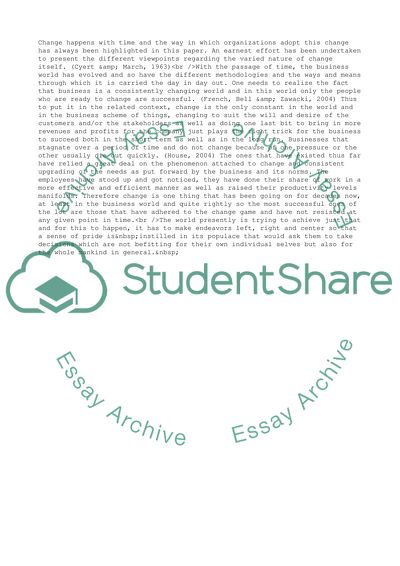Cite this document
(Traditional Organizational Development in Present Era Essay, n.d.)
Traditional Organizational Development in Present Era Essay. https://studentshare.org/business/1711291-traditional-od-organization-development-approaches-are-ill-suited-and-ill-equipped-to-meeting-the-change-needs-of-contemporary-organizations-in-todays-comp
Traditional Organizational Development in Present Era Essay. https://studentshare.org/business/1711291-traditional-od-organization-development-approaches-are-ill-suited-and-ill-equipped-to-meeting-the-change-needs-of-contemporary-organizations-in-todays-comp
(Traditional Organizational Development in Present Era Essay)
Traditional Organizational Development in Present Era Essay. https://studentshare.org/business/1711291-traditional-od-organization-development-approaches-are-ill-suited-and-ill-equipped-to-meeting-the-change-needs-of-contemporary-organizations-in-todays-comp.
Traditional Organizational Development in Present Era Essay. https://studentshare.org/business/1711291-traditional-od-organization-development-approaches-are-ill-suited-and-ill-equipped-to-meeting-the-change-needs-of-contemporary-organizations-in-todays-comp.
“Traditional Organizational Development in Present Era Essay”. https://studentshare.org/business/1711291-traditional-od-organization-development-approaches-are-ill-suited-and-ill-equipped-to-meeting-the-change-needs-of-contemporary-organizations-in-todays-comp.


